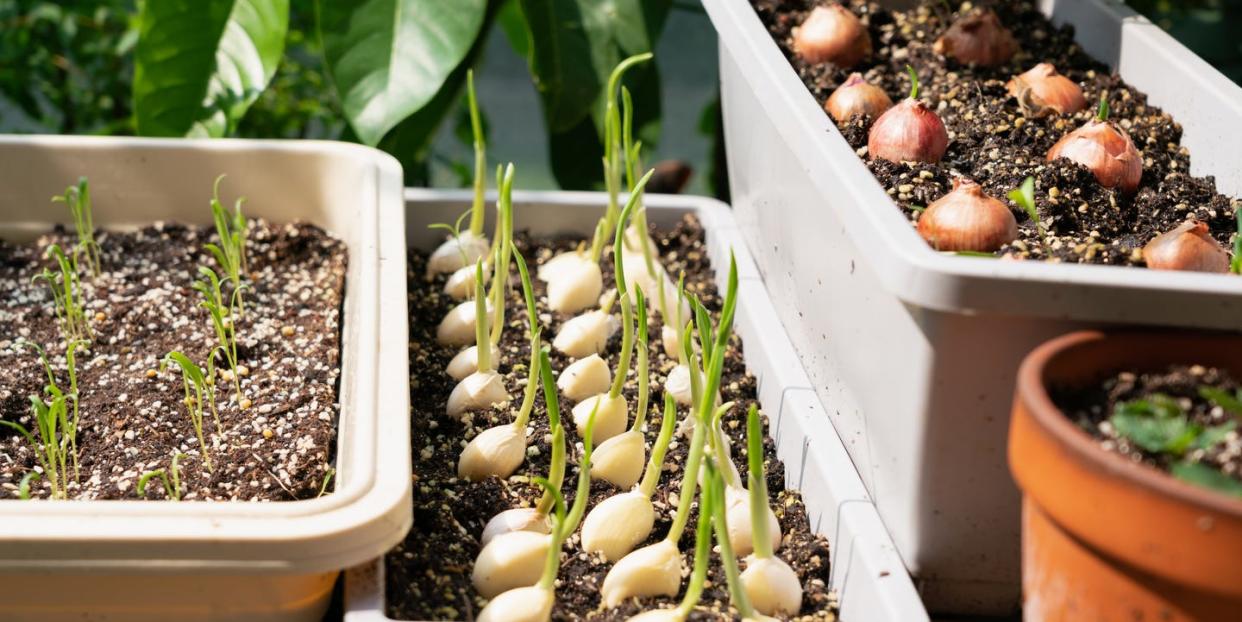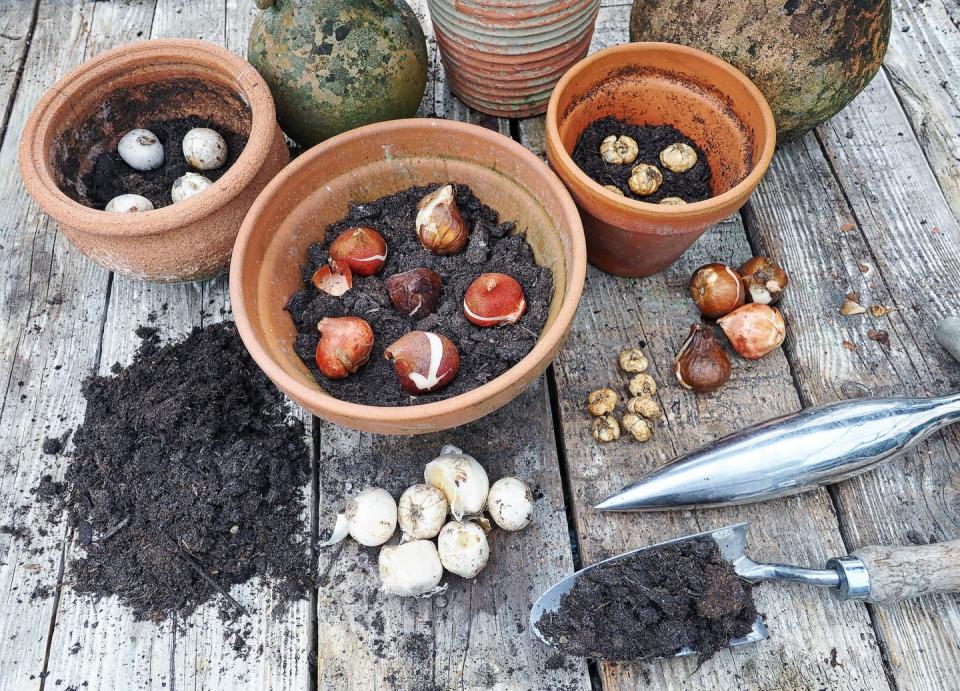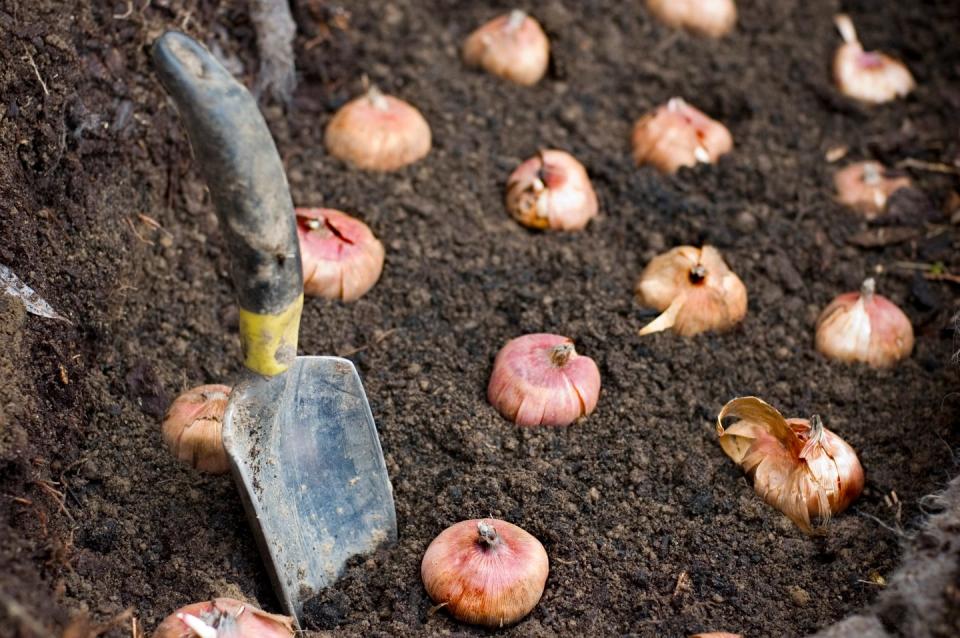Bulb lasagne ideas: 5 steps for a dazzling spring display

A bulb lasagne involves layering spring-flowering bulbs in a pot for a dazzling display that can last for months. With so much planting taking place in autumn, now is the perfect time to give this clever gardening hack a go.
What is a bulb lasagne?
Just like making lasagne, a bulb lasagne involves planting layers of bulbs in a container for successive planting. 'To create a showstopping display in your spring garden, plant your flower bulbs now,' says garden expert Sarah Raven. 'Layer your bulbs at different depths in what the Dutch call a "bulb lasagne". From early spring through to summer, a succession of beautiful blooms will emerge into your garden.'
The latest flowering bulbs are planted at the bottom of the pot, with layers of earlier flowering bulbs above them. As one layer of bulbs fades, the next layer down will grow through to ensure a continuous display.
'The emergent shoots of the lower layer bulbs will just bend around anything they hit sitting over their heads,' Sarah explains.
What are the best bulbs for lasagne planting?
Sarah Raven's top picks are 'tulip bulbs for sophisticated, high glamour flowers, alliums for early summer pizzazz, and narcissi for drifts of fantastic scent come spring'.
Five common bulbs used for creating a bulb lasagne include:
• Daffodils
• Crocuses
• Tulips
• Irises
• Alliums
Charlotte Denne, seed expert at Kent Wildflower Seeds, also suggests wildflower seeds for your bulb lasagne: 'Choose delicate and delightful species such as snakeshead fritillary, English bluebells, snowdrops, wild cyclamen, and wild daffodils to create a vibrant springtime display in a pot or border.'
How many layers can you have in a bulb lasagne?
'Most bulb lasagnes will have two to three layers, as any more would require a very deep container,' says Graham Smith MCIHort, a gardening expert from LBS Horticulture.
'Remember to consider the height of each bulb variety for a visually appealing display, choose bulbs that bloom at different times for continuous colour, and ensure the container has drainage holes to prevent waterlogging,' advise the horticultural experts at British Garden Centres.

How to plant a bulb lasagne: 5 steps to follow
1. First, choose a deep container at least 30-50cm deep. Polly Wilkinson, a garden designer from Studio Pollyanna, suggests working out how many bulbs you are planting to determine your pot size. For example, 40 bulbs would best fit a 40cm pot.
2. Next, fill your pot with soil. 'Be sure the pot has drainage holes at the bottom or the bulbs will rot in wet, undrained compost,' adds Polly. 'Fill the bottom of the pot with a good layer of compost.'
3. Now it's time to begin layering your spring-flowering bulbs. 'About 40-50cm below the surface add your first layer of bulbs, this is likely late-flowering tulips or alliums as they flower the latest,' Polly tells us. 'You can pack these pretty tight but do be sure no bulbs are touching and plant with the pointed side up (if ever in doubt plant them on their side — bulbs are clever and will find their way).'

4. Once you have layered those first bulbs, add a layer of compost around 10cm deep and then layer in your next set of bulbs. 'This might be earlier flowering tulips, or earlier flowering bulbs such as narcissus, crocus, hyacinth, and irises,' says Polly. 'Don't worry about the bulbs being on top of other layers of bulbs, they will find their way around them.'
5. Repeat this process until you reach the top of your pot. As the final step, fill the top with compost. 'If you don't like the look of bare earth you can always top with violas or wallflowers to see you through winter,' suggests Polly.
Once the flowering period has come to an end (usually around May), you may want to gently pull out the bulbs (leaves intact) and store them out of sight whilst the leaves die back and the energy goes back into the bulb.
Graham adds: 'Some bulbs may flower year after year, but some may not produce as impressive of a display as their first year. If you want to reuse bulbs, dig each layer up after it has flowered and store the bulbs somewhere dry.'
Follow House Beautiful on TikTok and Instagram.
You Might Also Like



